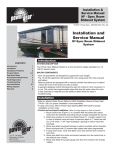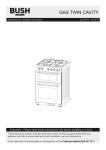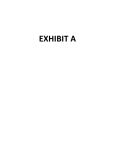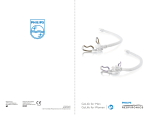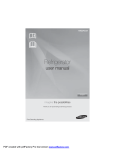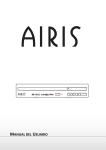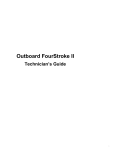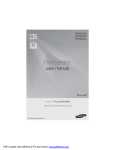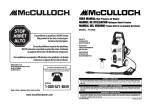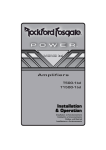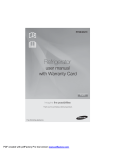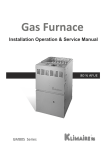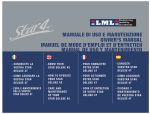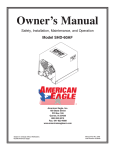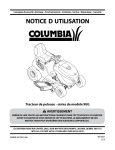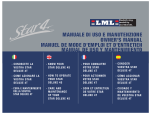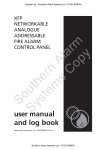Download manual - Modern Buddy
Transcript
Redefin ing mobi lity worldwide. ÓßÒËßÔÛ Ü× ËÍÑ Û ÓßÒËÌÛÒÆ×ÑÒÛ ÑÉÒÛÎŽÍ ÓßÒËßÔ ÓßÒËÛÔ ÜÛ ÓÑÜÛ ÜŽÛÓÐÔÑ× ÛÌ ÜŽÛÒÌÎÛÌ×ÛÒ ÓßÒËßÔ ÜÛ ËÍÑ Ç ÓßÒÌÛÒ×Ó×ÛÒÌÑ i ÝÑÒÑÍÝÛÌÛ Ôß ÊÑÍÌÎß ÍÌßÎ ÜÛÔËÈÛ ìÌ i ÕÒÑÉ ÇÑËÎ ÍÌßÎ ÜÛÔËÈÛ ìÍ i ÐÑËÎ ÝÑÒÒß× ÌÎÛ ÊÑÌÎÛ ÍÌßÎ ÜÛÔËÈÛ ìÌ i ÝÑÒÑÝÛ Î ÊËÛÍ ÌÎß ÍÌß Î ÜÛÔËÈÛ ìÌ i ÝÑÓÛ ßÆ×ÑÒßÎÛ Ôß ÊÑÍÌÎß ÍÌßÎ ÜÛÔËÈÛ ìÌ i ØÑÉ ÌÑ ÑÐ ÛÎßÌ Û ÇÑËÎ Í Ìß Î ÜÛÔËÈÛ ìÍ i ÐÑËÎ ßÝÌ× ÑÒÒÛÎ ÊÑÌÎÛ ÍÌßÎ ÜÛÔËÈÛ ìÌ i ÝMÓÑ ßÝÝ×ÑÒßÎ ÊËÛÍ ÌÎß ÍÌß Î ÜÛÔËÈÛ ìÌ i ÝËÎß Û ÓßÒÌÛÒ×ÓÛÒÌÑ ÜÛÔÔß ÊÑÍÌÎß ÍÌßÎ ÜÛÔËÈÛ ìÌ i ÝßÎÛ ßÒÜ Óß× ÒÌÛÒßÒÝÛ ÑÚ ÇÑËÎ ÍÌßÎ ÜÛÔËÈÛ ìÍ i ÍÑ×Ò ÛÌ ÛÒÌÎÛÌ× ÛÒ ÜÛ ÊÑÌÎÛ ÍÌßÎ ÜÛÔËÈÛ ìÌ i ÝË×ÜßÜÑ Ç ÓßÒÌÛ Ò× Ó×Û ÒÌ Ñ ÜÛ ÊËÛÍ ÌÎß ÍÌßÎ ÜÛÔËÈÛ ìÌ Red ef in ing mo bil ity world wide . ÑÉÒÛÎŽÍ ÓßÒËßÔ i ÕÒÑÉ ÇÑË Î Í ÌßÎ ÜÛ ÔËÈÛ ì Í i ØÑÉ ÌÑ ÑÐ Û ÎßÌÛ ÇÑËÎ Í ÌßÎ Ü ÛÔË ÈÛ ìÍ i ÝßÎÛ ßÒÜ Óß× ÒÌ Û ÒßÒÝ Û ÑÚ ÇÑËÎ Í ÌßÎ ÜÛ ÔËÈÛ ì Í IMPORTANT INFORMATION 1. Name: . . . . . . . . . . . . . . . . . . . . . . . . . . . . . . . . . . . . 3. YOUR VEHICLE Address: . . . . . . . . . . . . . . . . . . . . . . . . . . . . . . . . . . Model LML: STAR DELUXE 4 STROKE .......................................... Colour: . . . . . . . . . . . . . . . . . . . . . . . . . . . . . . . . . . . . .......................................... .......................................... Engine No. Licence No.: . . . . . . . . . . . . . . . . . . . . . . . . . . . . . . . . Chassis No. 2. YOUR DEALER. . . . . . . . . . . . . . . . . . . . . . . . . . . . . Name: . . . . . . . . . . . . . . . . . . . . . . . . . . . . . . . . . . . . Address:. . . . . . . . . . . . . . . . . . . . . . . . . . . . . . . . . . Key No.: . . . . . . . . . . . . . . . . . . . . . . . . . . . . . . . . . . . ......................................... Date of purchase: . . . . . . . . . . . . . . . . . . . . . . . . . . . . . ......................................... Date of Registration:. . . . . . . . . . . . . . . . . . . . . . . . . . ......................................... Tel. No.: . . . . . . . . . . . . . . . . . . . . . . . . . . . . . . . . . . Registration No.: . . . . . . . . . . . . . . . . . . . . . . . . . . . . . . Thank you for having chosen the STAR 4 Stroke as your new scooter. The STAR scooter is manufactured by LML Limited – one of the motorcycle manufacturing company in rapid expansion in India. A company that endeavours to redefine mobility everyday, the worldover by exceeding customer expectations. After years of studying the customer’ s needs, the company finally created the STAR 4 Stroke that promises an incomparable ride. It is equipped with a powerful 125/150cc four stroke engine that unleashes a phenomenal power. Apart from offering an excellent performance and a comfortable ride, the Star will make everybody envious thanks to its breathtaking design and its original colours that nobody can ignore. This owner's manual has been specially designed to help you understand your scooter better. It is important to read this manual to obtain the best performance from your Star. It will also help you to maintain it in the best condition. After reading this manual climb on board your new Star and discover international class mobility. CONTENTS DESCRIPTION PAGE NO. How to obtain the maximum performance DESCRIPTION PAGE NO. Operating the vehicle 26 from your LML STAR 4 Stroke scooter 3 Running-in Instructions 29 Vehicle Identification 6 Care and Maintenance 30 Parts & Specifications 7 General specifications 9 Specifications - Auto start 13 Auto start Circuit Diagram 14 Technical Specifications 16 Control Functions Locking System Switches Clutch 18 18 21 22 Gear Brakes Fuel supply 23 24 24 Cowls Changing the tyres Engine oil Spark plug cleaning Battery Air Cleaner Cleaning & Polishing Maintenance while not in use 30 31 33 34 34 37 38 38 Recommended Lubricants 39 Maintenance by LML authorised Technical Assistance Centre 40 Exhaust Emission Control 45 Wiring Circuit Diagram 46 2 Maximise the performance of your STAR 4S HOW TO OBTAIN THE BE ST PERFORM ANCE FROM YOUR STAR 4 STROKE Given below are some important features of your scooter and some useful tips on how to maximize the benefits it offers. 1. LML's fuel saver engine: This engine gives the best fuel consumption at a driving speed of 35-45 kms/hr after running-in of 1000 kms. The distance in kilometres can therefore vary on the basis of the road conditions, the intensity of traffic and driving habits and conditions, as well as the respect for the periodical maintenance intervals. Tips to stretch each litre of petrol even longer. 1.1 Change gears as per the required speed. Try to maintain the speed of 35-45 kms/hr to give you the best mileage. 1.2 Use clutch, brakes and full throttle only as and when required. 1.3 Maintain the air pressure in the front tyre at 1.4 bar and 1.6 bar in the rear tyre with only the driver on board or 2.0 bar with passenger. 3 Maximise the performance of your STAR 4S 2. Safety devices of the STAR 4 STROKE: Some tips for even safer driving. The safety features inbuilt in your scooter take away the worries from your driving. It is a perfectly balanced scooter and its state of the art braking system enables you to come to an instant halt without skidding regardless of the speed at which you are driving. 2.1. Always use a helmet while driving. A powerful DC horn and indicators with a buzzer enable you to negotiate busy and noisy traffic conditions. In addition, the head light retains its intensity even at low speed that makes for safer night driving. 2.4. Never drive in neutral gear especially when going down-hill or on a wet or slippery road. 2.2. Make yourself familiar with the driving signs and regulations. 2.3. Drive at a speed at which you are in complete control of the scooter. 2.5. Use horn and indicators whenever required. 4 Maximise the performance of your STAR 4S 3. The sensation of engine power of the STAR 4 STROKE: The engine power of your scooter is not only the highest among all scooters but also compares to some of the most popular motorbikes in the same cubic capacity. You can now surge ahead of other vehicles, either from a stop position or while negotiating busy traffic. Some tips on how to keep power under control 3.1. Accelerate only to the extent you are in complete control of the scooter. 3.2. Use its maximum power only when you need to. 4. An enjoyable ride that only the STAR 4 STROKE knows how to give: Your scooter has been designed so as to enable you to sit in a correct posture to avoid strain. Its comfortable and long seat, double acting suspension and strong shock absorbers better withstand uneven road conditions to give you driving pleasure, unmatched by any scooter. Some tips on how to enhance your driving pleasure. 4.1. Maintain the correct posture. 4.2. Sit in a relaxed and natural manner, not stiffly. 4.3. Reduce speed on uneven and bumpy roads. 5 Vehicle Identification VEHICLE IDENTIFICATION The vehicle is identified by a number on the chassis and another number on the engine. The chassis identification number is stamped inside the glove compartment on upper chassis as shown in (Fig. 1). Fig. 1 The engine number is stamped on the crank case (Fig. 2). Every STAR 4 STROKE has a spare set of keys. An identification number is punched on metallic tag, which is provided alongwith the key ring (Fig. 3). Please keep your duplicate key carefully along with the metallic tag. Fig. 2 Fig. 3 6 Parts & Specifications 1. Rearview mirror 7. Silencer 13. Glove compartment 19. Driver’ s foot platform 2. 3. Central stand Seat 8. 9. Kick starter Rear brake pedal 14. Fuel cock lever 15. Choke control knob 20. Rear turn indicator (LH side) 4. 5. RH side cowl Hook for bag 10. Front direction indicator (right side) 16. LH side cowl 17. Front direction indicator 21. Rear mudguard 22. Tail light 6. Rear turn indicator 11. Horn (RH side) 12. 5 spoke wheel hub (left side) 18. Spare wheel 7 Parts & Specifications Fig. 7 Fig. 6 1. 2. 3. 4. 5. 6. 7. Head light Fairing edge trimming STAR nameplate Front turn indicator Front mudguard LML symbol Fork cover 8. 9. 10. 11. 12. 13. 14. LML nameplate Grill Crest Central stand Rear view mirror Clutch lever Glove compartment lock 15. Ignition-cum-steering lock 16. Instrument panel 17. Accelerator twistgrip 18. Front brake lever 19. Gearchange twistgrip 20. Indicator switch 21. Light switch – starter and horn buttons 8 Parts & Specifications GENERAL SPECIFICATIONS 1. ENGINE 1.1 Engine: 4 stroke, horizontal single cylinder 1.2 Ignition: Via an electronic starter device (CDI) that feeds the live HT coil that generates the spark. 1.3 Lubrication: Wet sump forced pressure splash through a pump. 1.4 Clutch: Multiplate, oil bath type. The unit is cable operated by a lever located on the left hand side of the handlebar and is adjustable. 1.6 Cooling: Forced air provided by a centrifugal fan. 1.7 Mechanical starter: With kick starter pedal located on the right hand side of scooter. Push button only in auto start model. 1.8 Electric starter: Pull in the clutch lever and press the starter button. 1.5 Gear Box: Four speed forward drive with constant mesh gears immersed in oil bath are operated by the twist grip on the left hand side of the handlebar which functions in conjunction with the clutch control lever. 9 Parts & Specifications 2. FUEL 2.1 Fuel supply: Gravity fed from fuel tank to carburettor. Carburettor is a side draft carburettor and is having a vertical moving throttle slide. 3.2 Handlebar: Light alloy casting with headlamp, instrument panel and indicator lights. All transmission cables are concealed therein. 2.2 Fuel Gauge: In built with the speedometer indicates the quantity of petrol in the petrol tank by virtue of a float unit located inside the tank. 3.3 Steering column and suspension: The steering column is pivoted on the front wheel swinging hub. Front and rear suspensions are provided with helical spring & hydraulic dampers. 2.3 Throttle Control: Acclerator controlled by the twistgrip on the right side of the handlebars. 3. CHASSIS 3.1 Chassis: Pressed steel sheet and strong tubular structure. A pressed steel sheet shell covers the tubular structure. 3.4 Rear view mirror: Stylish moulded rear view mirrors on both sides of handlebar. 3.5 Security Lock: On the steering column and operated by a key. 3.6 Glove Compartment: A sleek & spacious glove compartment for keeping personal belongings, secured with a lock. 3.7 Seat: Tip-up seat with a safety lock. 10 Parts & Specifications 4. WHEELS 4.1 Wheels: Interchangeable and manufactured from pressed sheet steel with 3.50 x 10 tyres. 4.2 Rear brake: drum brake with expanding brake-shoes activated by a foot pedal on the right side of the foot platform. 4.3 Front brake: disc brake activated by a manual lever positioned on the right side of the handlebars. 5. TOOL KIT Tool kit in a pouch containing Box Spanner with lever Double sided screw driver 2 Double ended spanners Fig. 8 11 Parts & Specifications 6. ENGINE O IL: Quantit y of Engine oil in the crank case is 850 ml. This is for lubrication and c ooling of the Engine. Alwa ys maintain Oil level as per the marks prov ided on the level gauge / dipstick as s hown in the figure for details of checking see page no. 33. Upper le vel Lower le vel Fig. 9 Note : ATak e car e that E ngin e O il leve l is always m aint ained b etwee n the upper and lo wer level mar k o n th e oi l leve l g auge / d ipstic k. Runn ing engi ne with in suf ficien t oil m ay caus e ser iou s eng ine d amag e. Fig. 10 12 Parts & Specifications SPECIFICATIONS - AUTO START The STAR 4 STROKE has an automatic starter operated by a button underneath the light switch on the right of the handlebars (Fig. 11) as well as an optional method of kick starting the engine by using the kickstart pedal. The auto start circuit is operated by a 12 volt - 9 Ah battery. A PRD relay (prevention of restarting device) is provided to avoid use of the self starter when the engine is running. Fig. 11 A declutch switch has been provided to prevent starting of scooter when the clutch is engaged. An 8 Amp fuse (on spare wheel bracket, Fig. 12 & 13) is provided to avoid any damage due to short circuiting in auto start system. A powerful 12 volt-96 watt magneto charges the battery through a regulator with a built in charger. Fig. 12 Fig. 13 13 Parts & Specifications 14 Technical Specifications TECHNICAL SPECIFICATIONS Engine Displacement Bore x stroke Compression ratio Maximum power Maximum torque Fuel feed system Fuel Fuel tap Spark plug Clutch Starter Starter Gearchange Horizontal single cylinder four stroke, single overhead camshaft with two valves, cooled by forced air 125 cc / 150 cc 52.4 x 57.8 mm / 57.42 x 57.8 mm 9 ± 0.5 : 1 5.84 ± 0.25 kW at 6,000 rpm ± 200 rpm / 6.75 ± 0.25 kW at 6,250 rpm ± 200 rpm 9.15 Nm at 5,000 rpm / 11.54 Nm at 3,500 rpm KEHIN PB Ø 18 carburettor 95 octane petrol three-way: Open (ON) Closed (OFF) Reserve (RES) RG4HC (Champion) C8EH9 (NGK) UHR3CC (Bosch) Multiplate oilbath type Electronic (CDI) Electric with kick start pedal Manual, 4 speed gearbox with pinion always engaged 15 Technical Specifications Lubrication Silencer Dimensions (L x W x H) Seat height Wheel base Fuel tank capacity Front suspension Weight Maximum load capacity Wet sump Catalysed with secondary air injection system 1,760 x 695 x 1,110 mm 820 mm 1,235 mm 5.5 litres including 1 litre reserve Swing arm, hydraulic double-effect shock absorber with helical spring Engine crankcase functions partly as a swing arm and hydraulic double-effect shock absorber with helical spring Assembled pressed sheet steel unit 3.50-10 Disc brake in stainless steel Ø 200 mm Drum brake Ø 150 mm Pressed sheet steel with rear tubular framed structure covered by a sheet steel shell assembly. 121 kgs 275 kgs (2 persons with 10 kgs of luggage Controls Steering Accelerator Gears Clutch Front brake Handle bar Twist grip type on right hand side of the handle bar. By hand on left hand side of the handle bar. Lever operated on left hand side of the handle bar. Lever operated by right hand. Rear suspension Front/rear wheels Front/rear tyres Front brake Rear brake Frame 16 Technical Specifications Rear brake Pedal operated by right foot. Electricals Generator system Head lamp Tail light bulb Stop light bulb Speedolight bulb Turn signal light bulb Tell tale lamp Horn Battery Fuse 12 Volt 96 Watt. 12 Volt 35/35 Watt. 12 Volt 5 Watt. 12 Volt 10 Watt. 12 Volt 1.2 Watt x 2. 12 Volt 10 Watt. 12 Volt 1.2 Watt x 4. 12 Volt DC Horn fitted with AC to DC convertor 12 Volt 9 Ah. 8 Amp 17 Control Functions CONTROL FUNCTIONS 1. LOCKING SYSTEM The STAR 4 STROKE has a single key to block the steering, lock the glovebox and the seat as well as start the ignition. 1.1 Steering lock-cum ignition switch. Locking the Handlebar: First turn the handlebar to the extreme left and then turn the key anti-clockwise to lock position. Pull out the key after locking (Fig.14). Un-locking the Handlebar: Insert the key in ignition switch and turn it clockwise to unlock the handlebar. To switch on the ignition turn the key further clockwise to "ON" position (Fig. 15). Fig. 14 Fig. 15 18 Control Functions 1.2 Glove compartment lock: To open the lock, insert the key into the lock and rotate anti-clockwise till the end and then press the lock downwards. For closing, press the lid, turn the key clockwise and then take out the key (Fig. 16 & 17). 1.3 Seat Lock (Dual Seat): Insert the key, rotate it clockwise till the end then take it out. Push the lock with thumb (Fig. 18) and lift the saddle from the back (Fig. 19). Place the saddle in its normal position & press it down. To lock the saddle, follow the above procedure in reverse order. Fig. 16 Fig. 17 Fig. 18 Fig. 19 19 Control Functions INSTRUMENT PANEL An elegantly designed instrument panel which contains the following: 1. Fuel-Gauge 2. Fuel level indicator needle 3. Head light low beam indicator 4. LH turn signal indicator 5. Speed indicator needle 6. Odometer 7. RH Turn signal indicator 8. Head light high beam indicator Fig. 20 20 Control Functions 2. CONTROL SWITCHES: Control switches are located on the right and left hand sides of the handlebar. 2.1 Right hand side of the handlebar (Fig. 21). 2.1.1 Headlight l l l 2.1.3 Stop Light – Becomes operative when foot brake pedal or hand brake lever is pressed. 2.1.4 Horn – Press button (3) 2.1.5 Press the starter button (4) to electrically start the engine but only after having pulled in the clutch lever first. Press bottom end of (1) to activate the headlight. Press top end of (2) for high beam or bottom end of (2) for low beam. Headlight is switched off if (1) is pressed at top end. High and low beam positions are indicated on the instrument panel. 2.1.2 Instrument Panel lights and tail lights. Press bottom end of (1) for light. Press top end of (1) to switch off light. Fig. 21 21 Control Functions 2.2 Left hand side of the handlebar (Fig. 22). 2.2.1 Turn indicator switch: Press left hand end of switch for turning left and right hand end for turning right. Left & right turn indicators are shown on the instrument panel. 3. CLUTCH AND GEARCHANGE CONTROLS: Located on the left hand side of the handlebar, consisting of clutch lever for engaging the clutch and the gear twist for changing gears. 3.1 Clutch lever: Press the clutch lever towards the handlebar to disengage the clutch. (Fig. 23). Fig. 22 Fig. 23 22 Control Functions 3.2 Twist grip for gear change: There are 5 positions, one for neutral and the other four for driving at different speeds as given below; Gear position Speed band as given below 1 Upto 10 Kms/hour 0 Neutral 2 10-20 kms/hour 3 20-35 kms/hour 4 35 kms/hour & above Fig. 24 To change gear, press clutch lever and turn the twist grip. (Fig. 24) to the required position. 4. ACCELERATOR CONTROL: Located on the right hand side of the handlebar. It is a twist grip. For increasing acceleration rotate the twist grip towards yourself. Do the reverse for decreasing acceleration (Fig. 25). Fig. 25 23 Control Functions 5. BRAKES: There are two brakes one operated by foot and the other operated by hand. Both brakes should be applied simultaneously for most effective braking. 5.1 Foot Brake: Operates on the rear wheel. Press down brake pedal to apply the brake. The distance in which the scooter can be brought to a halt will depend on the speed at which the vehicle is travelling and the user's driving habits. (Fig. 26). Fig. 26 5.2 Hand Brake: Operates on the front wheel. Press hand brake lever towards the twist grip (Fig. 27). 6. FUEL SUPPLY 6.1 The fuel tank is located under the seat (Fig. 28) and is accessible only when the seat is unlocked and lifted. For filling in petrol unscrew the cap and close it after refuelling. Fig. 27 Fig. 28 24 Control Functions 6.2 Control of flow of petrol (Fig. 29) : There is a fuel tap under the seat that has three positions: (ON) for a regular flow of fuel, (OFF) to stop the flow of fuel from the tank to the engine and (RES) that must be activated when on reserve. If the vehicle stops on account of lack of petrol, then turn the cock lever to (RES) i.e. "RESERVE" position. There is one litre of petrol kept in reserve in your tank for any emergency. There is a fuel gauge in the instrument panel for indicating the quantity of fuel in the tank. 6.3 Choke control knob (Fig. 30): Located below the fuel cock. To be used for starting the engine when it is cold. Pull the choke knob out-wards for operation. Pull out the choke control knob to operate it. It must be pushed back in when the engine has warmed up. Caution: If the c hoke c ont r ol k nob is pulled out a nd remai ns out , this would c aus e an exc es siv e l evel of fuel in the c ar bur ett or th at wo uld c aus e ir r egular run ning and elev ated f uel c ons umpti on. Fig. 29 Fig. 30 1. Choke control knob, 2. Fuel Cock lever, 3. Hook for Bag 7. HOOK FOR BAG: There is a hook for hanging a bag under the seat. 25 Operating the vehicle OPERATING THE V EHICLE Warning: Before driving your scooter make yourself thoroughly familiar with all operating controls and their functions. 1. BEFORE STARTING THE ENGINE: 1.1 Check if tyres are properly inflated. 1.2 Check for correct play in the clutch lever (Fig. 23) and make sure that it operates properly. 1.3 Check that the brake pedal play is correctly adjusted. 1.4 Check that the accelerator control functions correctly and the play is within normal limits. Fig. 31 A- Open fuel cock B- Switch 'ON' ignition C- Put gear in neutral position D- Pull out the choke control knob (only when the engine is cold) E- Position the accelerator control at minimum. F- De-clutch G- Kick starter pedal 26 Operating the vehicle 2. STARTING THE ENGINE (Fig. 31). 2.1 Turn fuel cock lever to "ON" position. 2.2 Turn 'ON' the ignition switch. 2.3 Put gear control in neutral position. 2.4 Pull out the the choke control knob only when the engine is cold. 2.5 Bring the throttle to idling position. 2.6 If you are starting the engine for the first time in the day, press the clutch lever and, keeping it pressed, kick the starter lever a couple of times. 2.7 Operate the kick pedal by pushing it down with a kick for starting the engine. To start the engine using the electric starter, press the clutch lever and then press the starter button. 2.8 When the engine is running normally, press the choke knob back to its normal position. Caution: 3. i. Do not use electric starter for more than 5 seconds at a time. Release the push button start switch for approximately ten seconds before pressing it again. If the engine fails to start after repeated attempts hold the throttle 1/8-1/4 open and push the button start switch. ii. Before using the electric starter button, ensure that the clutch lever has been pressed. DRIVING THE SCOOTER: 3.1 Remove the vehicle from stand, by pushing it forward. 3.2 Seat yourself on the scooter with feet on the ground and hands on the handle bar. 3.3 With the engine running at idling speed, press the clutch lever with the left hand and rotate the gear twist grip to 1st gear position. 3.4 Put the scooter in movement by gradually releasing the clutch and simultaneously turning the accelerator twistgrip. 27 Operating the vehicle 3.5 To change gear, rotate the accelerator twistgrip back to zero, press the clutch lever and turn the gearchange twistgrip control and position it on the next upper or lower gear. 3.6 Use indicator switch button for turning and use horn whenever required. 4. APPLICATION OF BRAKES: 4.1 Turn the accelerator twistgrip back to zero. 4.2 Press the clutch lever and change the gear to the neutral position. 4.3 Use foot pedal brake and hand brake simultaneously for the most efficient braking. 28 Running-in-Instructions ENGINE RUNNING-IN Operation: The most important period in the life of your scooter is its first 1000 kms. The engine is brand new and different moving parts of the engine need to be set to their correct operating tolerances. This ensures a longer life for your vehicle. It is therefore necessary to take some precautions so as not to overload the engine. 1. Keep to the following speed limits 1st Gear: 3. Do not drive with half (partially engaged) clutch. This will not only damage the clutch but will also cause overheating of the engine. 4. Allow a cooling off period of 5-10 minutes after each hour of use. 5. Ensure oil level in engine to recommended level, by checking the level with the help of dipstick. 0 to 10 kms/hr. 2nd Gear: 10 to 20 kms/hr. 3rd Gear: 20 to 35 kms/hr. 4th Gear: 35 kms/hr and above. 2. Avoid running the scooter on full accelerator (throttle) for long periods. Vary the speed from time to time. 29 Care and Maintenance CARE AND MAINTENANCE 1. REMOVAL AND REFITTING OF COWLS: The right hand side cowl is to be removed for checking of oil level and spark plug. The left hand side cowl is to be removed for taking out or refitting the spare wheel. The levers for opening the cowls are placed under the seat. To remove the cowls: 1.1 Lift the seat as explained on page 19. 1.2 Turn the cowl opening levers outwards (Fig. 32). 1.3 Hold the body fairing with both hands and remove the cover in an upwards and backwards movement and remove it (Fig. 33 & 34). 1.4 Pull out the cowl by disengaging its rear end. (Fig. 35). 1.5 Refit the cowl, by following above procedure in reverse. Fig. 32 Fig. 33 Fig. 34 Fig. 35 30 Care and Maintenance 2. CHANGING THE TYRES : 2.1 Removing and refixing the sparewheel 2.1.1 Remove the left hand side cowl as mentioned above. 2.1.2 The wheel is fixed by three nuts. Unscrew the nuts using the box spanner from the tool kit, remove the three elastic washers and remove the wheel (Fig.36). 2.1.3 For fixing the spare wheel follow the above procedure in reverse order. 2.2 Changing of Front Wheel 2.2.1 Put the vehicle on its central stand. 2.2.2 Remove the five nuts that fix the wheel to the wheel hub using the box spanner from the tool kit (Fig. 37). While loosening the nuts, hold the wheel with one hand. 2.2.3 Remove the spring washers and take out the wheel from the brake drum. 2.2.4 For refitting, follow the above procedure in reverse order. 2.3 Changing of Rear Wheel : 2.3.1 Put the vehicle on its central stand. 2.3.2 Remove side cowls as explained on page 30. Fig. 36 2.3.3 Remove the battery. Follow the instructions given on page 35 for removal and installation of battery. 31 Care and Maintenance 2.3.4 Bring the fuel knob to "close" position. Start the engine to exhaust petrol in the carburettor as well as in the fuel line. The engine will stop automatically when the fuel is exhausted. 2.3.6 Lay the scooter gently on ground on its right hand side with the handle bar sleeve touching the ground at right angle. 2.3.7 Bring the vehicle in first gear and hold the wheel with one hand. Remove the five nuts securing the wheel to the brake drum by using the box spanner (Fig. 38). 2.3.5 Remove the spare wheel as explained on page 31. 2.3.8 Remove the spring washers and take out the wheel from the brake drum. 2.3.9 For refitting, follow the above procedure in reverse order. Precaution: Fig. 37 1. Tighten all wheel securing nuts alternately and progressively. Re-check if all nuts are tightened properly. 2. Get the tyre pressure checked to the recommended level at the nearest service station. Fig. 38 32 Care and Maintenance 2.4 Tyre Rotation: All three wheels of the STAR 4 STROKE are interchangeable. However, the air pressure in the tyre will depend on whether it is fitted in the front or rear position. To ensure even tyre tread wear, it is necessary to rotate the tyres and change the face of the tyre (in relation to the wheel rim) after every 6000 kms. Follow the sequence for tyre rotation as explained in fig. 39. Fig. 39 3 CHECKING ENGINE OIL LEVEL AND CLEANING SPARK PLUG 3.1 Park the vehicle on level surface. 3.1.1 Remove the right hand side cowl as directed on page 30. 3.2 Checking oil level: 3.2.1 For checking the oil level, unscrew dispstick as shown in fig. 40. 3.2.2 Clean dipstick by a dry cloth. 3.2.3 Immerse the oil level rod without screwing it in. Fig. 40 33 Care and Maintenance 3.2.4 3.2.5 3.2.6 3.2.7 3.2.8 3.3 3.3.1 3.3.2 3.3.3 3.3.4 3.3.5 3.3.6 3.3.7 Take out dip stick and check the level of oil, as shown in fig. 9. Oil level should be above lower level make and below upper level mark. If level is less add Engine Oil to maintain correct level. Refix the dipstick. Wipe off any excess oil which may have been spilled. Refit the cowl. Spark plug cleaning: Remove the right hand cowl. Disconnect the HT lead cable (Fig. 42). Wipe & clean the area around the spark plug. Using the box spanner, unscrew the spark plug (Fig. 43). Clean out any excessive carbon deposit. Refix the spark plug back to its position. Refit the cowl. If you have a feeler gauge you can check the gap between the electrodes in the spark plug. This gap should be 0.7-0.8 mm (fig. 41). To adjust the gap again, it is better to go to an authorised LML assistance centre. Fig. 42 Fig. 41 Fig. 43 4. BATTERY CHECKING Battery requires regular and thorough maintenance as advised below: 4.1.1 The level of electrolyte must always be in between the upper and lower levels marked on the battery. Normally a constant level in the specified range is maintained for about two months or approximately 2000 kms (Fig. 44). 34 Care and Maintenance 4.1.2 The level of electrolyte should be checked once in a month. In case of a normal decrease (0,5 cm) put in distilled water only so as to reach the upper level indicated on the battery. If there is a marked drop in the electrolyte level (1 cm or more) have the battery checked at an authorised LML assistance centre. Caution: 1. Bat ter y s hould be r emov ed i f the v ehicl e is t o be w as hed ly ing on its s ide. 2. Use only 8 Amp fuse to prevent serious damage to the wiring harness & battery. Ignition switch should be in "off" position while replacing fus 4.2 Removal and refitting the battery 4.2.1 Turn the ignition key to "off" position. 4.2.2 Remove the left hand side cowl as explained on page 30. 4.2.3 Remove the screw securing ground cable (black) connected to the negative (–) battery terminal by using the end of the screw driver from your tool kit. (Fig. 45) 4.2.4 Similarly follow the procedure for removing the red cable connected to the positive (+) battery terminal. 4.2.5 Remove the battery and the acid discharge tube. 4.2.6 Detach the fastener belt and take out the battery. Precaution: Keep t he bat ter y and bl eeder tu be aw ay fr om the v ehic le to av oi d any damag e t o the pai nt ed s ur f ac e of t he s cooter due to l eak age or s pi llage of batt er y elec tr oly te. 4.3 Installation: 4.3.1 Clean the battery box. Fig. 44 35 Care and Maintenance 4.3.2 Clean the battery thoroughly from the outside. 4.3.3 Put the battery in the battery box. 4.3.4 Connect the fastener belt first to the lower hook, then hold the battery firmly with one hand, stretch the belt and fasten it in the upper hook. Re-check if the battery is fastened firmly (Fig. 46). 4.3.5 Re-fix battery bleeder tube and ensure that it is routed properly through its clamp. 4.3.6 Fix the "Positive" (+) terminal first and then the "Negative" (–) terminal. 4.3.8 Apply grease around the terminals to prevent corrosion. 4.3.9 Ensure, Protection cap provided on battery harness is fixed properly on positive (+) terminal of battery. Caution: Al way s ens ur e that t he bl eeder t ube is not c logged, c r imped or bent. The t ube mus t be of an adequat e l engt h. R epl ace t he ble eder tube in c ase it is not of cor r ec t length or it is c logged, or bent . 4.3.7 Make sure the battery cable does not touch any metallic surface during fitment. Fig. 45 Fig. 46 36 Care and Maintenance 4.4 Storage of battery while not in use 4.4.1 Keep the battery fully charged. 4.4.2 Maintain electrolyte level at MAX./ "UPPER LEVEL" 4.4.3 Take battery out of the vehicle and store it in a dry, cool place and at a constant temperature. 4.4.4 Keep battery away from rain, dew, high moisture and direct sunlight. 4.4.5 The battery should be charged once a month when the vehicle is not in use. For initial charging, the battery must be charged at least for 7 hours. Always go to the authorised LML assistance centre for battery maintenance and charging the battery. 5. AIR CLEANER Air cleaner is fitted below the fuel tank and requires cleaning during each periodical service and more frequently when riding in dusty area's. 37 Care and Maintenance 6. CLEANING & POLISHING: Frequent and thorough cleaning of your scooter will further enhance its appearance and extend its life. 6.1 The scooter should be cleaned at ambient temperature i.e., not immediately after use or in hot sun. 6.2 Use a low pressure water hose for cleaning the vehicle. 6.3 Wipe it, clean and dry with soft cloth. 6.4 Do not use detergents or powders which are likely to leave scratches on the surface. 6.5 For polishing, use normal car polish and rub with soft cloth. 7.1 With the help of a pipe, syphon out the petrol from the fuel tank. 7.2 Start the engine for some time and exhaust the petrol in the carburettor. 7.3 Remove the spark plug as explained on page 34 and put a few drops of Engine Oil in the spark plug hole. Press the kick lever a couple of times. Refix the spark plug. 7.4 Clean the vehicle thoroughly and apply antirust grease on all unpainted metallic parts. 7.5 Raise the wheels off the ground by placing wooden planks and deflate the tyres so that they do not touch the floor. 7.6 Cover the scooter. 7. CARE OF YOUR VEHICLE WHEN NOT IN USE FOR LONG PERIODS If you are not going to use your vehicle for more than two months then you should store it properly as per the following advices. 38 Recommended Lubricants Recommended quantity of oil to be filled in Engine is 850 ml. 39 Maintenance by Authorised Service Dealer PERIODICAL MAINTENANCE TO BE CARRIED OUT BY AN AUTHORISED LML ASSISTANCE CENTRE Preventive Maintenance: To obtain the best performance from your STAR 4 STROKE it is important to carry out periodical maintenance on your vehicle. The following table gives the suggested action for different items of maintenance and their periodicity. Code of suggested action is: NR. Item 1 Engine Oil Check or maintenance jobs 0 Km Predelivery Filling R 500 Km 3000 Km 6000 Km 9000 Km 1200 0 Km 1500 0 Km 1800 0 Km 2100 0 Km 2400 0 Km Replacement S Check level every 1000 Km and top up if required. Replace every 3000 Km or every 1 year. Replace every 3000 Km or every 1 year. 2 Engine Oil Filter Replacement S 3 Engine Oil Filter Screen Clean P P P P P P P P P 2700 0 Km 3000 0 Km P P 40 Maintenance by Authorised Service Dealer NR. Item Check or maintenance jobs 4 Spark Plug Check/ Replacement 5 Air Filter and its elements Clean/Lubricate 6 Fuel Circuit Pipes Check/ Replacement 7 Fuel Filter Check/ Replacement 8 Check Emission Level 9 10 0 Km Predelivery 500 Km 3000 Km 6000 Km 9000 Km 1200 0 Km 1500 0 Km 1800 0 Km 2100 0 Km 2400 0 Km 2700 0 Km 3000 0 Km C C C C S C C C S C C P P P S P P P S P P C C C C S C C C S C C C C S C S C S C S C S Check/Adjust C C C C C C C C C C C Valves Clearence Check/Adjust C Nut Fixing Head/ Cylinder Check/ Tightened C C C C C C C C C C C C C C C C C C 41 Maintenance by Authorised Service Dealer 0 Km Predelivery NR. Item Check or maintenance jobs 11 Chain & Chain Tensioner Check/ Replacement C C S C C 12 Chain Guide Check/ Replacement C C C C C 13 Electrical System Check C C C C C C C C C C C C 14 Battery Check C C C C C C C C C C C C Check/ Replacement C C C C C C C C C C C C 15 Front Brake System 500 Km 3000 Km 6000 Km 9000 Km 1200 0 Km 1500 0 Km 1800 0 Km 2100 0 Km 2400 0 Km 2700 0 Km 3000 0 Km Replace brake oil every 12000 Km or every 2 years 16 Rear Brake System Check/Adjust/ Replacement C C C C C C C C C C C C 17 Clutch Lever Play Check/Adjust C C C C C C C C C C C C 42 Maintenance by Authorised Service Dealer NR. Item Check or maintenance jobs 0 Km Predelivery 500 Km 3000 Km 6000 Km 9000 Km 1200 0 Km 1500 0 Km 1800 0 Km 2100 0 Km 2400 0 Km 2700 0 Km 3000 0 Km 18 Accelerator Command Check/Adjust C C C C C C C C C C C C 19 Steering Column Rings Check/Adjust C C C C C C C C C C C C 20 Security Tightened Nuts, Bolts and Screw Check/ Tightened C C C C C C C C C C C C 21 Central Stand Check C C C C C C C C C C C C Check C C C C C C C C C C C C Check/ Clean C C C C C C C C C C C C 22 23 Oil Pump Functioning Clean Crank Case Breather Tube 43 Maintenance by Authorised Service Dealer NR. Item 24 Rear/Front Damper 25 Wheels/ Tires Check or maintenance jobs 0 Km Predelivery 500 Km 3000 Km 6000 Km 9000 Km 1200 0 Km 1500 0 Km 1800 0 Km 2100 0 Km 2400 0 Km 2700 0 Km 3000 0 Km Check C C C C C C C C C C C C Check/Replaceme nt C C C C C C C C C C C C Tyre rotation every 6000 Km C: Check/Adjust P: Clean/Lubricate S: Replacement R: Filling 44 EXHAUST EMISSION CONTROL In accordance with the Central Motor Vehicle Rules, LML range of scooters manufactured by LML Limited meet emission standards prior to despatch from factory. Normally simple carburettor adjustment will help to control CO level in exhaust gases. However, it is necessary to check Carbon Monoxide (CO) level in exhaust gases. Following are some tips to control CO level in exhaust gases: 3. Clean and adjust carburettor properly. Adjust the air mixture screw to ½ to 1½ threads anti-clockwise from fully to closed position and thereafter set idling screw 1000 to 1300 RPM. 4. Check the compression pressure and ensure that it is within limits. Check ignition timing and reset as recommended. 5. Check and adjust spark plug gap. 1. Use only recommended spark plug. 2. Clean the air filter and replace if required. 45 Care and Maintenance SECONDARY AIR SUPPLY SYSTEM Secondary air supply system Removal /Installation (A) Remove hex bolts (Fig . 47) of mounting bracket secondary air system. Bolt (B) Disconnect tube to Air cleaner box (X), intake manifold (Y) by removal of spring clips. (C) Disconnect tube (Z) to Silencer by removal of hose clamp. Fig. 47 (D) For cleaning, blow air through pipe X. Y. Z. (E) Check tubes for leakage replace if necessary. Fig. 48 47 The descriptions and illustrations in this booklet are not to be taken as binding on the manufacturer. The essential features of the model described and illustrated herein remaining unaltered, LML Limited, reserves the right to carry out at any moment, without being obliged to bring this booklet up-to-date, modifications to the machine, its parts, or accessories, that the company deems to be convenient for improvement purposes or of what may be required for manufacturing or commercial purposes. Redefining mobility wor ldwide. C-10, Panki Industrial Estate, Site ll, Kanpur - 208022, INDIA. : 91-512-2691391, 6660301 : [email protected] : 91-512-2691381, 6660300





















































